Thunder Mesa
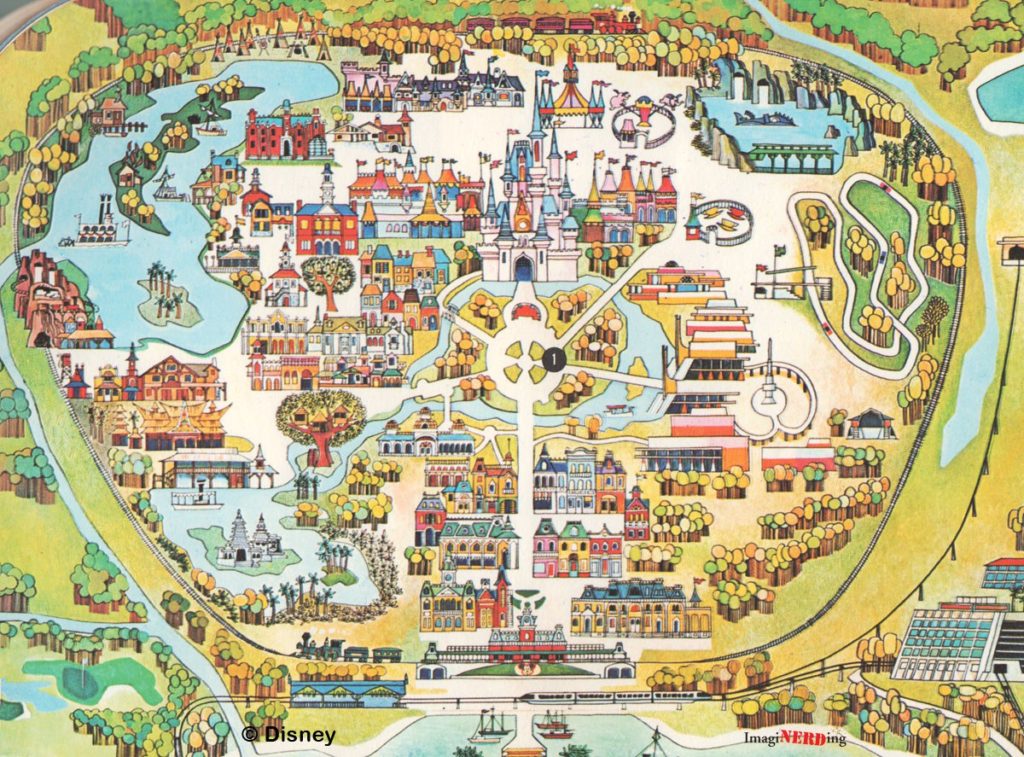
Our journey begins in Frontierland at the Magic Kingdom.
When this park opened back in 1971, Frontierland was, admittedly, little more than a historic recreation of an Old West town, save for its four noteworthy attractions: a canoe launch to circumnavigate the Rivers of America, Tom Sawyer Island, a Walt Disney World Railroad depot, and the delightful debut of the Audio Animatronic Modern Marvel: Country Bear Jamboree designed by Marc Davis.
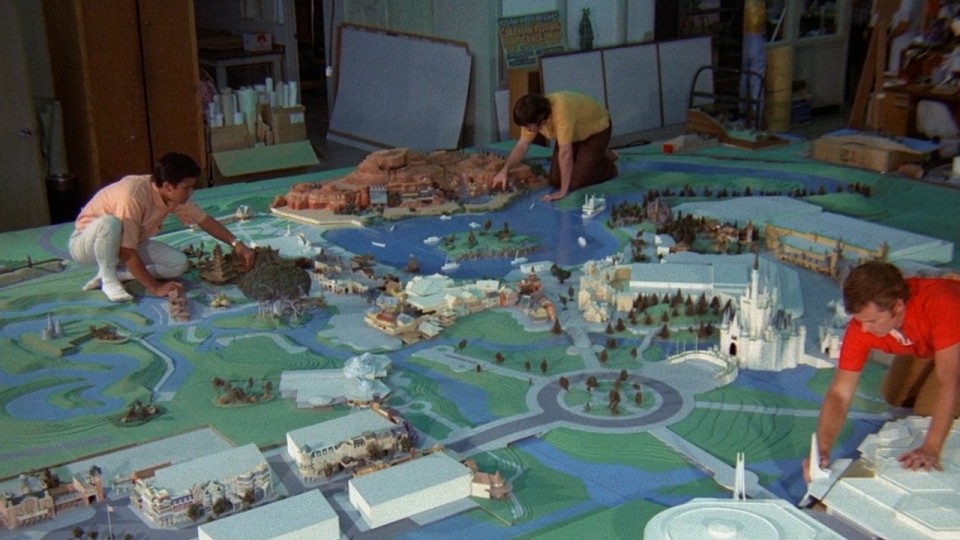
However, that was due to change shortly after the park opened, as evidenced by the map and model of the Magic Kingdom, above. In fact, Frontierland was about to be joined by perhaps the most ambitious attraction Walt Disney’s Imagineers had ever designed. Though it may be unfair to call Thunder Mesa an attraction at all… In fact, it was really meant to be a land-within-the-land – an entire, self-contained world within Frontierland; a sort of “pavilion” in the later EPCOT Center sense, with multiple attractions housed inside.
Some of the concept art pieces developed and released for Thunder Mesa are among the most well-known pieces of never-built concept art out there… And as any fan of Disney Parks concept art can tell you, the best pieces are as renowned for what they don’t show as what they do.
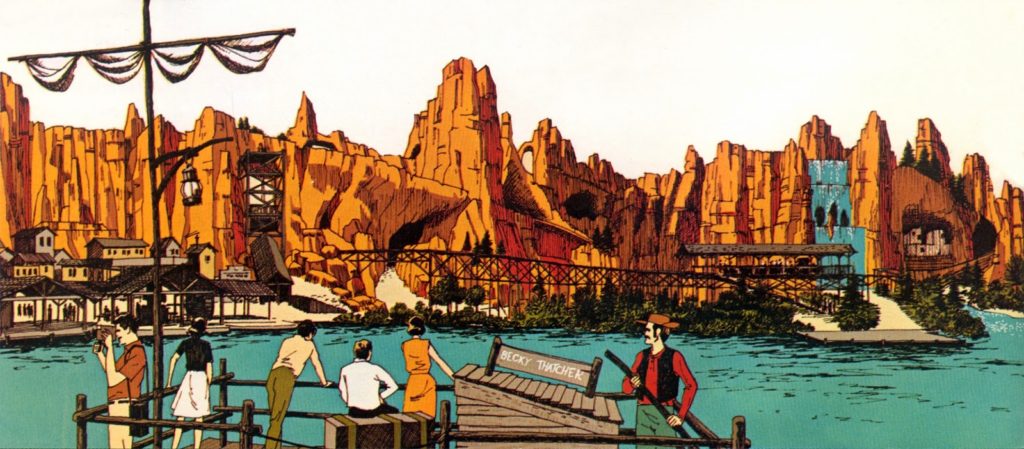
That’s why the artwork above is one of the most well-circulated and yet least-understood Disney history artifacts available. Dissecting the truth behind the massive Thunder Mesa complex was a massive task, and one thankfully undertaken by the phenomenal and essential Passport to Dreams Old & New – an absolute must-read, scholarly Disney history resource. Without the work of the revered “FoxxFur,” the shroud of mystery surrounding this art may still be obscuring our view.
To truly understand the scale of Thunder Mesa, think of Cars Land’s Radiator Springs Racers – a towering, ever-present mountain range of rusted hoodoos, arches, and waterfalls topped with distant dwarfed evergreens, a complete frontier town nestled along its base. And therein would reside a number of exciting attractions.
For example, the bucolic Western town (visible in the lower left of the Passholder-exclusive art above) was a clever facade disguising the Mesa Terrace, a Blue-Bayou style upscale restaurant with views overlooking Thunder Mesa and its forced-perspective streets.
Every few minutes, a train would come steaming through town on the way to the mountain range’s summit. This attraction – boarded via a platform before the thundering waterfall – was a runaway mine train roller coaster… Along its (relatively short) course, it would pass through the Mesa Terrace restaurant before chugging to the top of the showbuilding and racing past Mine Train Through Nature’s Wonderland-style scenes of wildlife and cactuses. Though only a few minutes, this mild thrill would hopefully be a draw for teens.
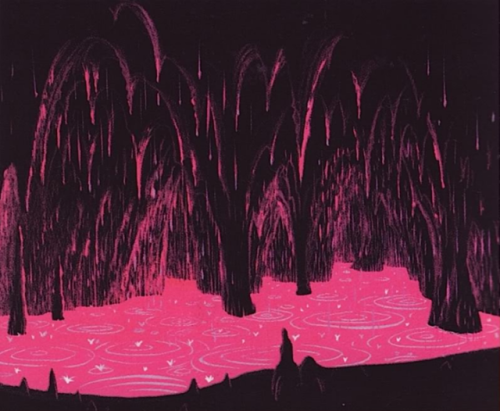
Boarding in the calm lagoon fed by that central waterfall, a separate log flume attraction would carry guests up to the same second level of the mountain range via an enclosed lift through a cavern of rainbow paint pots and stalactites (another nod to Nature’s Wonderland), zipping along white-water waterways and dipping through cactus groves for a final splashdown.
However, these two thrill attractions (relatively bare by Disney’s standards) were merely accessories, meant to complement the real headliner… Now, it’s time for us to take a Possibilityland ride through Western River Expedition – the lost Magic Kingdom E-Ticket that could’ve been.
Western River Expedition
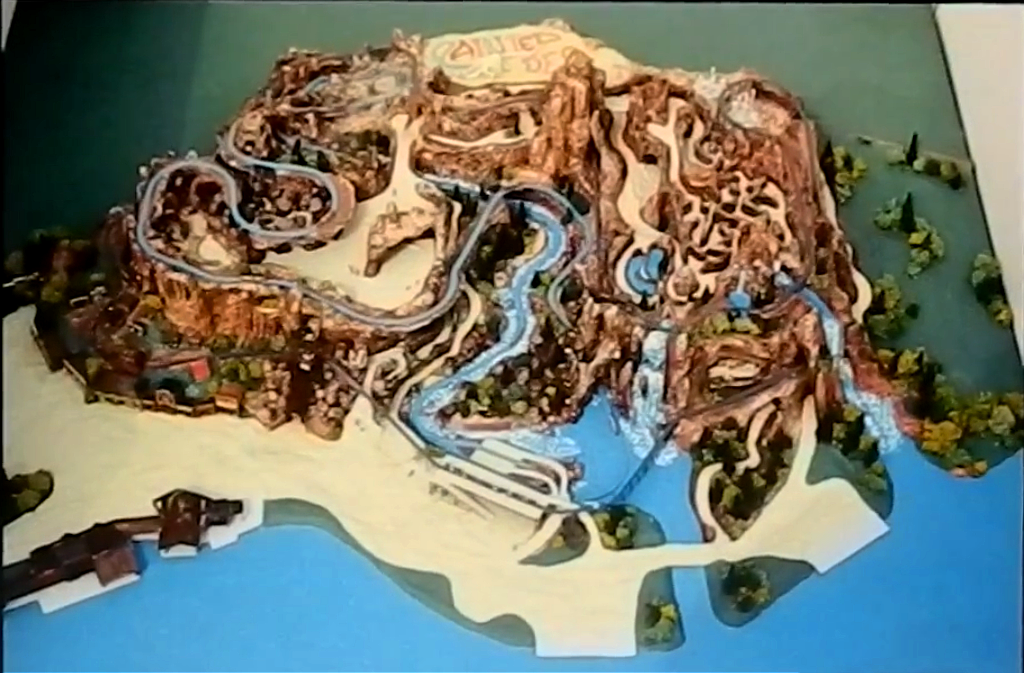
The Thunder Mesa complex is huge; gigantic; enormous. And to contain a restaurant, two thrill rides, and an epic, Pirates-sized, boat-lead family dark ride, it would have to be. But if we could pull the upper story off of the ride entirely, we’d reveal the three massive, connected showbuildings that Western River Expedition would’ve taken place in.
Our journey to the Western River would begin beneath a massive ore elevator positioned in the side of the mountain range. Passing through the craggily, red peak, we’d emerge in the leftmost showbuilding below, in a gorgeous, technicolor sunset landscape of glowing orange hoodoos and an endless sunrise.
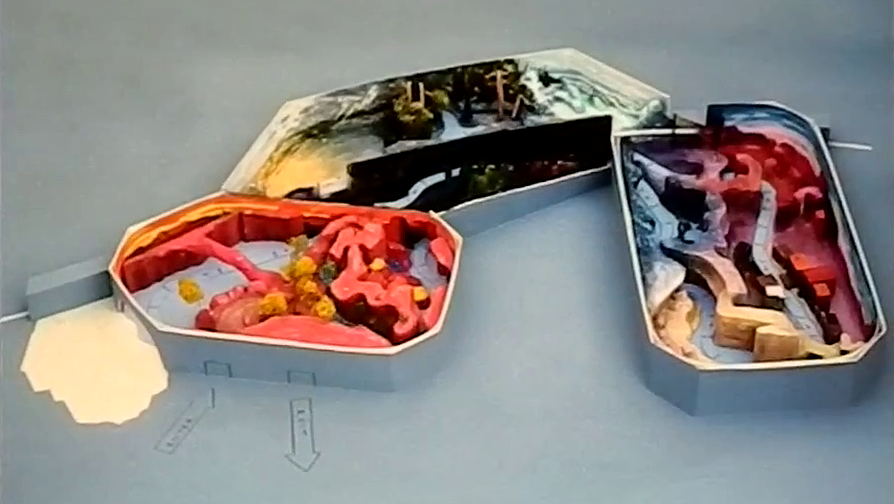
Bathed in warmth and underscored by a lush, romantic musical score stylized after great Western films, you might consider this an antithesis to the cold, cramped, stone introduction to the Pirates of the Caribbean that Magic Kingdom ended up with. And really, most of Western River Expedition will read as an analog to Pirates, taking the ride’s “formula” and recasting Pirates’ coolness for warmth; a Caribbean town for a glowing canyon; an endless night sky for a perpetual sunset.
Winding desert paths past brush and tumbleweeds would then lead queueing guests over a natural stone arch, with views down to the churning river carrying passenger boats below. Altogether, this enormous, kinetic scene would set this ride’s tone: oversized, elaborate, and adventurous. Winding paths would then bring guests down a race face and to a simple wooden loading area to step into boats to set sail down the river, the elegant Hollywood score fading away to be replaced with sounds of nature.
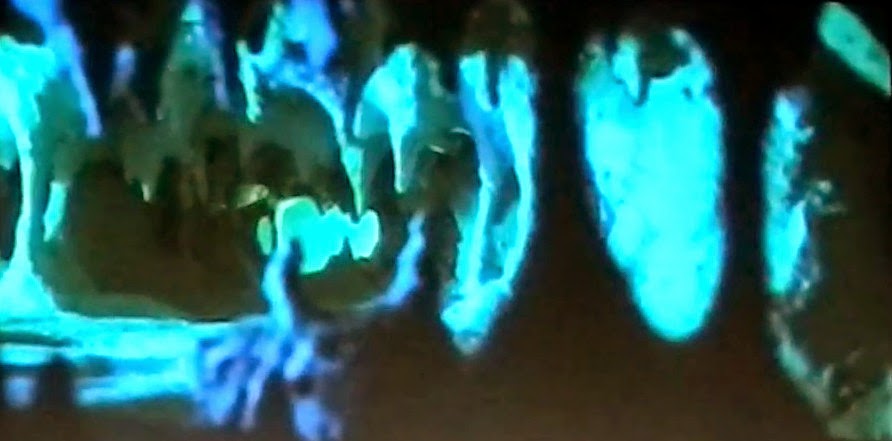
Our first sight? A cave mouth approaching. As the boat drifts in, it’s surrounded with thousands of stalactites and stalagmites, with only the dripping water as company. (This dark cavern is the central portion of the showbuilding in the model above.)
Then, ahead, the natural formations of the cavern would seem to create a familiar shape… a rabbit. As the boat approaches, a single, simple instrument seems to come from the shape… Then, drifting farther, the stalactites seem to form increasingly familiar shapes… a coyote, then a cowboy, then an old man…

As the boat passes each, each seems to add its own musical cue, blending with the ones before… More and more sounds join together, creating a harmonious choir of otherworldly music as we sail deeper into fantasy. Leaving the cavern behind, the music accumulated there follows us as the cumulative Western River Expedition theme.
Outside, the sunset we left behind has become dusk, and the boat drifts through the last shimmering expanse of the desert beneath milky pink skies. On the left up ahead, a genuine steam locomotive (the Walt Disney World Railroad!) chugs across a rocky bluff. If the riders on the railroad were to look out across the canyon, their view would be our next sight: a stagecoach held up on a wooden tressle over the river.

The bandits join in the Western River theme’s new minor key change, with the lead maurauder warning that he’ll see us again soon.
Winding away under the overpass, we drift through the desert prairie at twilight, marveling at the fluffy clouds floating in the endless, dark sky (think Pirates) and distant rock formations silhouetted against emerging stars…
A family of bison gathers around prairie dogs as they pop out of their burrows; coyotes set against the darkness howl; a stagecoach parked along the river serves as the base camp for a group of cowboys, whose guitar and harmonica join the musical theme as the cook at the chuck wagon tunes in…
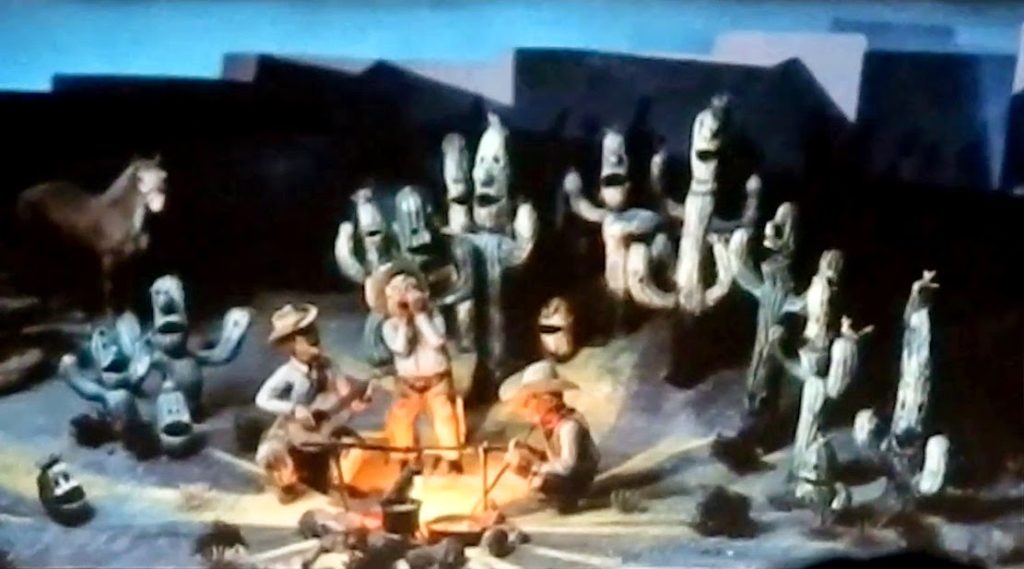
…joined by an entire choir of cacti!
Rounding the corner from this vast wilderness, we sail onward and into the town of Dry Gulch. This is the part of the ride that’s become infamously inflated in the minds of Disney Parks fans given the massive amount of artwork Marc Davis produced, toying with vignettes and scenes that could populate this clapboard Western town. However, the 1971 model of the ride (the only version Disney came close to building) is clear that this town would’ve been a relatively simple one with a row of wooden buildings on either side of the river channel.
It’s this town, though, where the Technicolor, bold, bright look of the attraction (inspired by the work of “it’s a small world’s” Mary Blair) can be most easily recognized… For this tiny, insignificant desert town amongst the endless expanse of nature is perhaps the most beautiful piece of the ride.
Sailing through, the entire right side of the river would be washed in a cool, blue moonlight, the sun setting beyond… Yellow lights from window lamps would crawl out of the green clapboard buildings – a vibrant illumination against this backlit blue row of buildings.
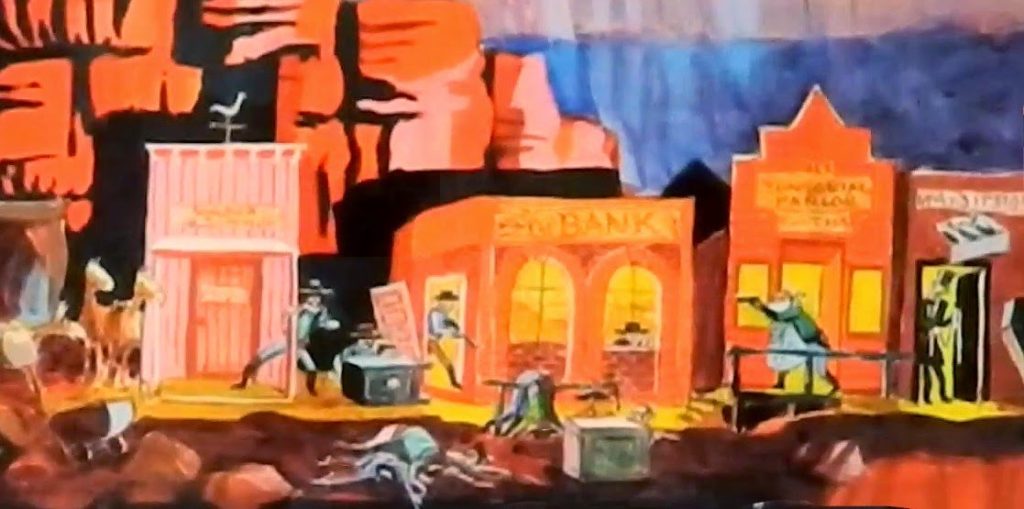
The left side of town, meanwhile, would be glowing, lit by the blazing orange tone of the setting sun, impossibly long shadows stretched beyond.
A hypnotically colorful dichotomy, this spectacular scene would be as epic in execution as Pirates’ entry into the Caribbean port town, with activity all around: a Snake Oil salesman selling his wares, a mortician, and a blazing gun battle between bank robbers and the town’s sheriff against the fiery red facade of the bank as detailed and involved as the Pirate’s raid.

Passing under a bridge and around a bend, we stumble upon a rain dance being performed by a tribe of plains Indians, dancing around a rock butte where water pours down from above, gathering into channels and coursing through the desert. Thunder and lightning begin to gather in the darkening sky as the boat drifts further into a narrowing canyon. As the lightning flashes overhead, water from the approaching storm collects, pouring as waterfalls down the rock faces and into the river.
Around the corner, the boat begins to chug its way up a waterfall, with the flooding buttes above sending water cascading down their sides.
The eyes of unseeable animals seeking shelter surround the boat in the darkness as it inches further and further up the waterfall, lightning flashing in the distant forest ahead. Higher and higher we climb until the boat levels out in a great forest high atop a desert mesa.
With an epic crash, a bolt of lightning strikes one of the towering trees here, setting it ablaze. Around the corner, the forest is aflame, with toppled trees creaking and growing as they smoulder. We’re trapped drifting through a fiery forest, helplessly awaiting the trees to crumble. At least things can’t get any worse!
Oh no…
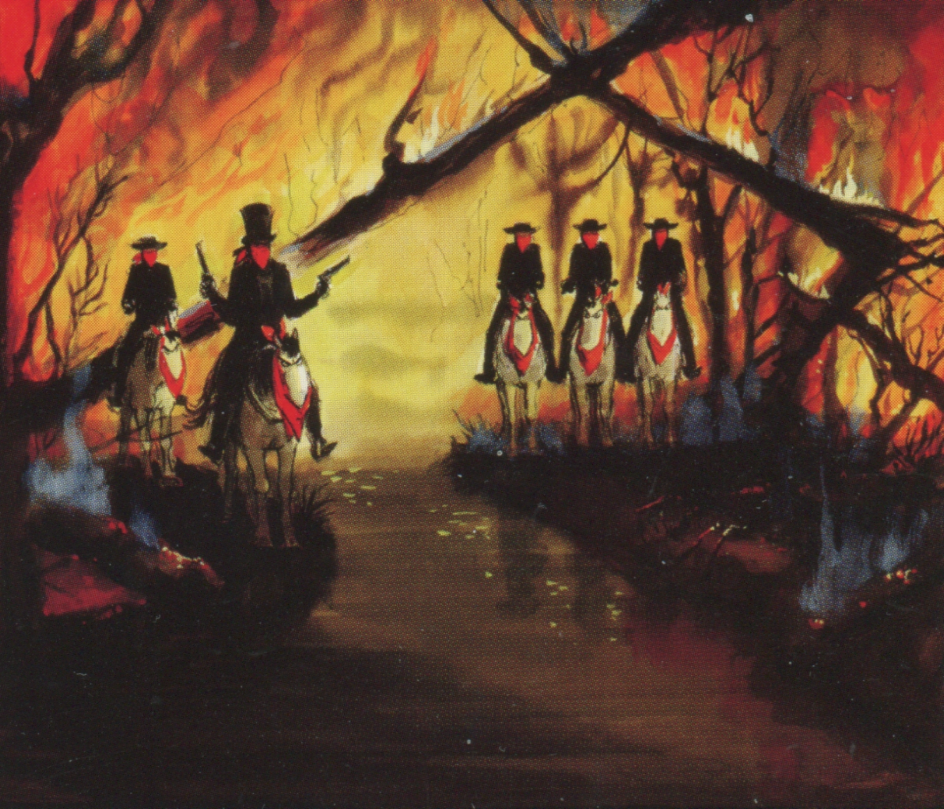
The bandits are back, determined to make good on their earlier promise to catch up with us… There’s no escape! Except…
The boat tips over the edge of a waterfall, teetering for a moment before sliding down the incline, splashing mercifully in a darkened cave!
Ahead, an orange glow comes into view… Can it be? We made it to the canyon we saw when we boarded! It’s sunrise now, as that cinematic Western River score reppears! And now, it’s got a new, triumphant feeling. The boat passes beneath the rocky arch we stepped over earlier, returning once more to the wooden docks. Altogether, our Western River Expedition has taken us back to the fantastical world of the Old West for close encounters with wildlife, outlaws, and the sheer strength of Mother Nature. Phew! With our unbelievable adventure complete, we can exit through the canyon and back to Thunder Mesa.
The End?
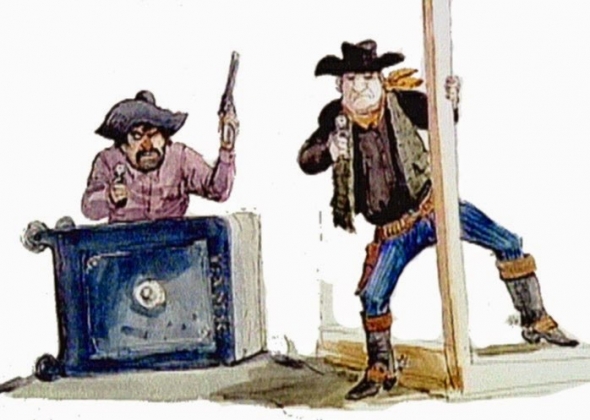
Western River Expedition was poised to become Disney’s “next big thing:” an almost-unbelievable adventure meeting (and in places, exceeding!) the standards set by Disneyland’s revered Pirates of the Caribbean. A new take on the formula for a new park, Western River Expedition would’ve been an important exclusive meant to showcase the versatility and creativity of this “Walt Disney World,” even after Walt.
And yet, it was canned. Why in the world would Disney cancel the E-Ticket perfectly positioned for Magic Kingdom’s Frontierland? And where does its DNA live on today? That’s the question… and as we wrap up our historic look at this could-be classic, we’ll find out exactly how this would-be wonder shaped a couple Disney classics even without being built… Read on…





